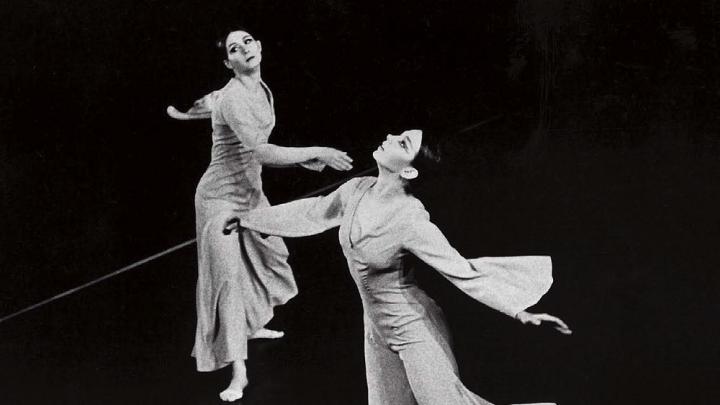Renowned choreographer Twyla Tharp, Ar.D. ’18, known for her breakthrough innovations bridging ballet and modern dance, recounts her early years as a creator in “Minimalism and Me” at the Institute of Contemporary Art. Fittingly, the show is an unusual hybrid. Former Twyla Tharp Dance member Richard Colton gives a pre-performance talk, then Tharp takes the stage to offer her own recollections, interspersed with photographs and original-cast films of some site-specific dances, as well as performed excerpts of nine seminal works, including “Tank Dive” (1965), “Generation” (1968), “Dancing in the Streets of London and Paris, continued in Stockholm, and sometimes Madrid” (1969), and “The Fugue” (1970).
Tharp’s initial works were accompanied only by silence, and developed without any audience in mind, she told the Chicago Tribune when “Minimalism and Me” debuted last year at that city’s Museum of Contemporary Art. “I had no music. I had no men in the group. We never had a stage. Basically, it was empty space and time, the most fundamental of materials.”
Tharp spent the first part of her childhood in rural Indiana, then moved to San Bernardino County, California, where her parents ran a drive-in movie theater and encouraged her cultural pursuits. She studied poetry, literature, music, and dance in high school, ultimately landing at Barnard, where she discovered the work of Martha Graham and Merce Cunningham, and joined the Paul Taylor Dance Company when she graduated in 1963. “Tank Dive,” her first official choregraphed work, coincided with the founding of her own company. She went on to create the groundbreaking crossover works “Deuce Coupe” (1973), which paired Joffrey Ballet dancers with Beach Boys music, and “When Push Comes to Shove” (1976), featuring Mikhail Baryshnikov. More recently, she choreographed the Tony Award-winning Broadway musical Movin’ Out (with music of Billy Joel), and, in 2012, the ballet based on George MacDonald’s eponymous tale The Princess and the Goblin.
Yet “Minimalism and Me” (December 13-16) takes the audience back to New York City in the ’60s and ’70s, and the emergence of a rigorously spare movement in music and visual arts. The eschewing of biographical interjections and the emphasis on powerful lines, geometric shapes, and the physical contexts for art would influence Tharp, but also coincide with her nascent explorations of the naked power of human movement. During a 2015 National Public Radio interview, Tharp recalled how she and a female troupe would dance and rehearse in abandoned Manhattan buildings—amid decrepitude, with nothing to distract from the immersive art of human bodies moving together through space—“because as a musician I know that people hear better than they see, they hear emotionally, and so I needed to learn what could movement do. You need to know your own independent heartbeat. You need to know who you are regardless of anybody around you.”







